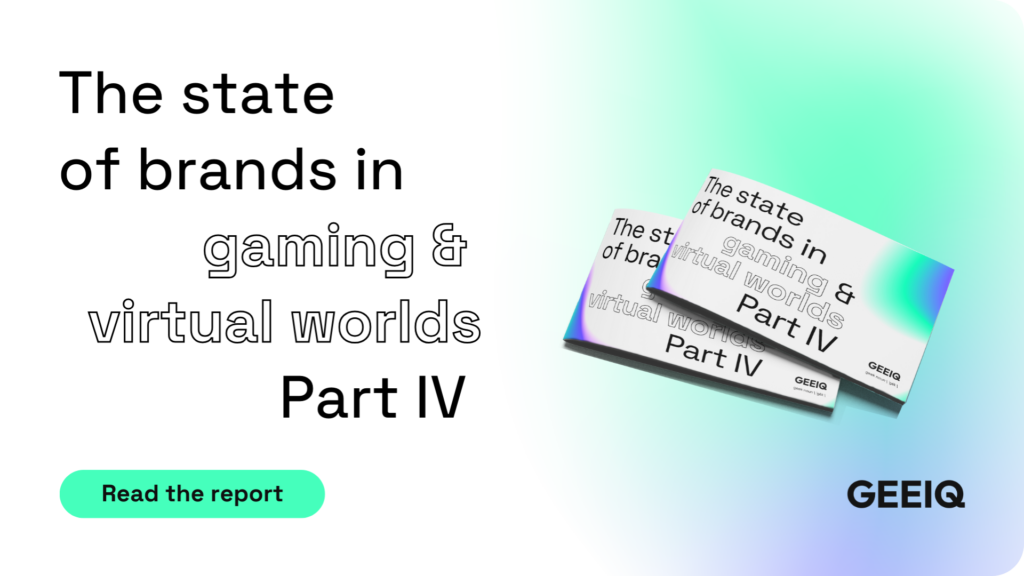The Minecraft Movie and Roblox’s new ad partnership with Google are reshaping how brands think about gaming. Albane Prioux, who has worked on virtual strategies for L’Oréal and Tommy Hilfiger, unpacks it all. 👇
Two major developments this week reinforced the evolving role of gaming and virtual worlds in brand strategy.
- A Minecraft Movie earned $163 million on opening weekend, despite a rocky trailer debut and mixed reviews.
- Roblox and Google’s new partnership makes media buying on the platform more accessible and scalable for marketers.
Together, they show how gaming can support both brand-building and performance marketing objectives.
So, if your marketing calendar includes the Super Bowl but not GTA VI, it might be time for a rethink.
Here’s what this week’s news tells us about where gaming fits into the future of marketing. Let’s get started.
Why should marketers care about gaming?
Gaming is a core cultural channel. Brands are used to leveraging seasonal events to drive relevance. Events like the Olympics, the Barbie movie, or Glastonbury receive dedicated campaign planning. But major gaming launches often go unaddressed in broader brand marketing strategies.
That’s a missed opportunity. Why?
Gaming is one of the strongest cultural currencies among Gen Z and Gen Alpha. For younger audiences, titles like GTA VI or The Last of Us represent shared cultural moments, with levels of engagement that often surpass traditional entertainment.
Marketers should approach these gaming moments with the same level of strategic consideration as other major sports and entertainment events. The Minecraft Movie is a compelling example of how to do just that.
The Minecraft Movie: A brand marketing play

Despite early skepticism and mixed reviews, the Minecraft Movie delivered a commercially successful opening. But this isn’t just a box office win. This signals a shift in who Minecraft is targeting.
Gen Z is often the default demographic in gaming discussions. However, the Minecraft Movie’s marketing and brand partnerships suggest a clear shift toward Gen Alpha and their millennial parents. The film leans into childlike humor while casting early-2000s stars like Jennifer Coolidge and Jack Black to appeal across generations. Collaborations with FMCG and family-oriented retailers, most notably the McDonald’s Happy Meal promotion, reinforce this positioning. The strategy paired nostalgic IP with Gen Alpha-focused products to expand Minecraft’s household reach.
This release also highlights a broader commercial strategy. Beyond box office revenue, the film served primarily as a brand awareness play. The wide range of merchandise and partnerships with mass-market brands helped reinforce Minecraft’s cultural relevance, grow its player base, and strengthen its reach among younger audiences.
Roblox x Google Ads: A performance marketing play

The Roblox and Google partnership marks a step forward in media accessibility. The announcement is significant for marketers focused on performance.
By integrating with Google Ads Manager, Roblox becomes more accessible for scaled media buying. That enables campaign targeting, optimization, and reporting that aligns with existing digital marketing infrastructure.
For brands seeking to reach Gen Z and Gen Alpha in high-attention environments, this development lowers the barrier to entry while increasing the ability to measure and iterate. Combined with platform-native brand integrations, it offers a broader spectrum of options, from storytelling to conversion.
Key takeaways
Marketers should reassess how gaming fits into both brand and performance marketing strategies. Relevant actions may include:
- Identifying which gaming or game-adjacent releases align with core audience segments.
- Building content strategies timed to cultural gaming moments.
- Assessing current infrastructure to support programmatic buying in gaming platforms.
- Developing partnerships that connect in-game engagement to retail or product strategies.
As attention continues to fragment, virtual worlds represent one of the few remaining high-engagement environments, especially among younger consumers. Successful brands will be those that engage early and meaningfully, not just reactively.
To learn more about virtual strategies and brands in gaming, sign up to get access to our latest report, The State of Brands in Gaming & Virtual Worlds Part IV. 👇
